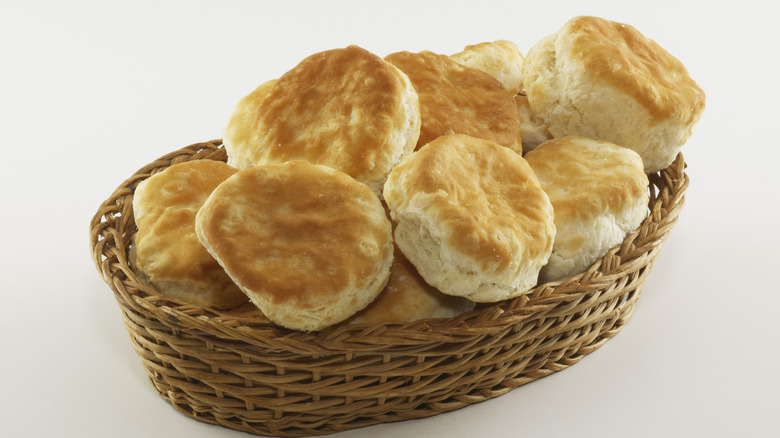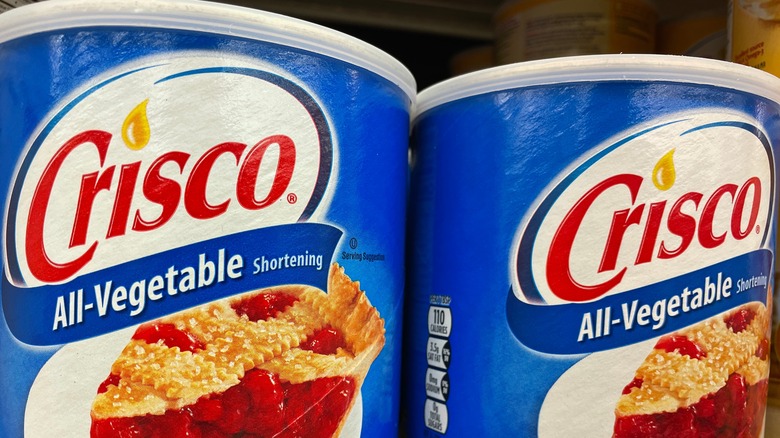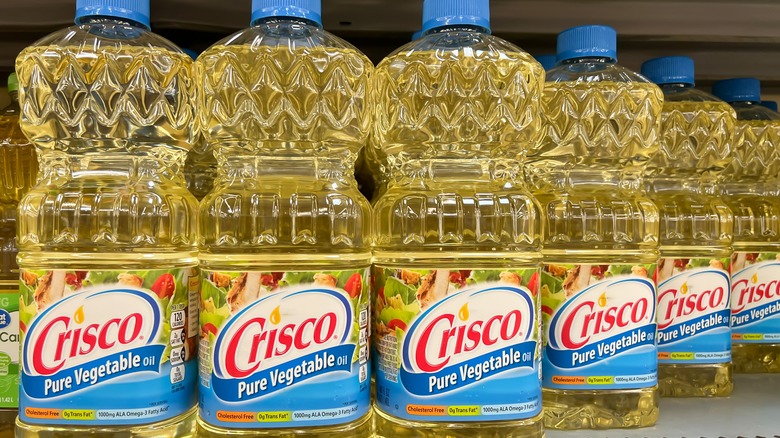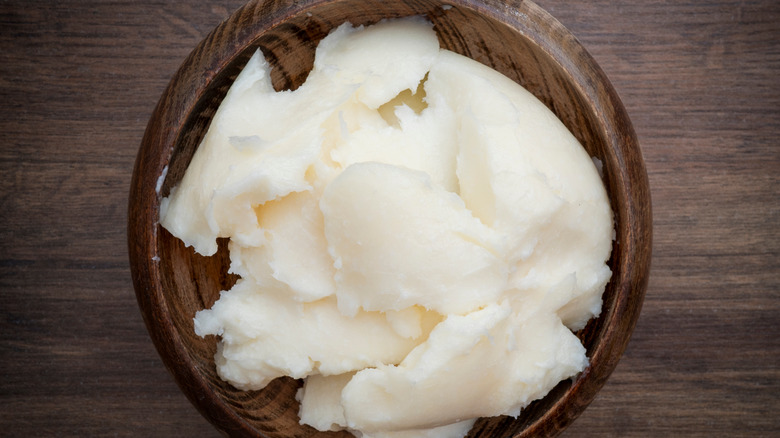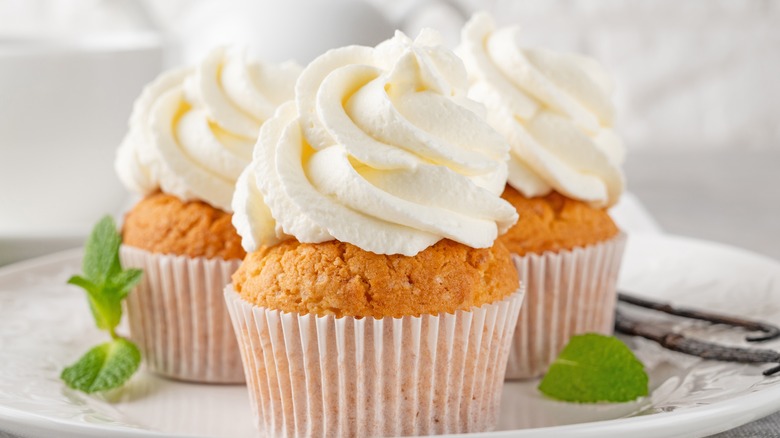The 4 Types Of Shortening, Explained
Shortening is a baker's best friend. This solidified fat makes flaky crusts, crisp baked goods, and tender cakes, according to Britannica. Fat like this is often incorporated into baked goods to produce workable dough and crumbly cake textures.
Crisco might be synonymous with shortening for many people, but the company didn't start making its famed product until 1911. Before Crisco came on the scene, lard — an animal fat product — was used for cooking and baking. But Crisco found a way to make an all-vegetable solid fat that was considered to be more economical, according to the Crisco website.
The word shortening itself refers to any type of fat that is solid at room temperature (via The Spruce Eats). This type of fat got its name from its role in creating "short" doughs that have a lower elasticity than what we call "long" doughs. Food Network explains that shortening separates the strands of gluten in a dough resulting in flaky, tender baked goods; as opposed to having longer strands that would result in chewy products like bread. The longer the shortening — or fat — stays solid, the more pockets of steam are created, resulting in that melt-in-your-mouth flaky layering of many biscuits and pastries.
There are four different types of shortening, and they all have different ratios of fat and water: solid, liquid, all-purpose, and cake or icing shortening, per The Spruce Eats. Each one serves a unique purpose and thrives in specific types of recipes.
Solid shortening is perfect for pie crust
Solid shortening comes in a can or as sticks like butter, explains Spruce Eats. This type is especially good for pie crusts because it holds its shape while baking — as opposed to butter, which softens as it heats and causes the crust to fall, according to Food Network.
This is because solid shortening is 100% fat and has no water, meaning that steam pockets won't develop unless it's mixed with something that does have water, like butter. However, baking cookies with shortening will result in a softer batch than if you used butter (via Bob's Red Mill). Another bonus to using solid shortening is that it has little to no flavor, according to Food Network. For this reason, it is adaptable to recipes of any flavor profile.
Liquid shortening is good for frying
Liquid shortening is excellent for frying, but Spruce Eats notes that it's also good in cakes or recipes that require you to melt solid shortening — as oil is a more common household item. This type of shortening is sold in bottles because these fats stay liquid even at low temperatures. They are usually derived from corn, soybean, palm nuts (like coconut), and peanuts, according to Britannica.
They have a mild flavor but have been processed so that both the flavor and color are lighter. As opposed to the pure white solid shortening, these liquids are often light yellow in color. Other than frying, this type of shortening is great for recipes like bread, rolls, or other firm baked goods (via Britannica).
All-purpose shortening is for commercial use
All-purpose shortening brags a trans-fat-free nutrition label, according to Prospect. An acute awareness of the effects of trans fats came onto the scene in the '90s and was then banned by the FDA in 2020 (via Healthline). Because of the underlying health concern of consuming trans fats, all types of shortenings are now trans-fat free.
According to Spruce Eats, all-purpose shortening is used universally in baking and frying and does not contain any emulsifiers, making it extremely versatile. This is an important distinction between it and cake shortening, which does contain emulsifiers.
Cake shortening to make fluffy frosting
Cake shortening makes bakery items and their toppings fluffy and voluminous. Pro Natural Resources says that this type of shortening, "supports the structure of baked goods with higher ratios of liquid and/or sugar." Frosting isn't much more than just fat and sugar, so what exactly does shortening do for frosting?
Using shortening as the fat component will keep your frosting stable; whereas a butter-based frosting would melt over time even at room temperature (via Food 52). On top of adding stability to your perfectly placed frosting, cake shortening's white color and neutral flavor make it perfect to slip into any recipe, explains Spruce Eats.
Even though there are many little differences, you don't need to stick to only one type of shortening when baking! According to Food 52, you can combine cake shortening and butter together to find a happy medium between rich flavor and structural integrity.
